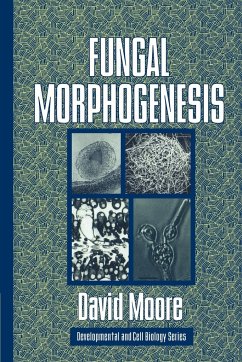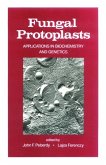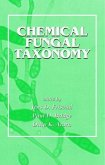Fungal Morphogenesis brings together, for the first time, the full scope of fungal developmental biology.
Fungal Morphogenesis brings together in one book, for the first time, the full scope of fungal developmental biology. It provides a coherent account of the subject and puts forward ideas that can provide the basis of future research. Throughout, the author blends together physiological, biochemical, structural and molecular descriptions within an evolutionary framework. Sufficient information is provided about fungal biology to give the reader a rounded view of the mycological context within which fungal morphogenesis is played out, without obscuring the broader biological significance. Readers with a background in basic biology should not need to bring any other knowledge with them, nor should it be necessary to refer elsewhere, in order to appreciate fungal morphogenesis. Written by one of the few people with the necessary breadth of research expertise to deal authoritatively with the wide range of topics, this book will appeal to developmental and cell biologists, microbiologists, and geneticists.
Table of content:
Preface; 1. Fungi: a place in time and space; 1.1. Fungal lifestyle; 1.2. The essential nature of fungi; 1.3. Evolutionary origins; 1.4. Evidence from fossils; 1.5. Origin of development; 1.6. Evolution within Kingdom Fungi; 1.7. Horizontal transfer of genetic information; 1.8. Comparing and combining; 2. Hyphal growth; 2.1. Fungal cells; 2.2. Hyphal tip extension; 2.3. Septation; 2.4. Branching; 2.5. Growth kinetics; 2.6. Dynamic boundaries; 3. Metabolism and biochemistry of hyphal systems; 3.1. Nutrients in nature; 3.2. Extracellular polymer-degrading enzymes; 3.3. Production, location, regulation and use of degradative enzymes; 3.4. The menu of basic nutrients; 3.5. The wall and membrane as barriers; 3.6. The flow of solutes; 3.7. Transport strategy; 3.8. Water relations; 3.9. Intermediary metabolism; 3.10. Carbon metabolism; 3.11. Fat catabolism; 3.12. Nitrogen metabolism; 3.13. Secondary metabolism; 4. Physiological factors favoring morphogenesis; 4.1. Nutrition; 4.2. Adaptations of metabolism; 4.3. Environmental variables; 5. The genetic component of hyphal differentiation; 5.1. Nuclear divisions; 5.2. Sexuality in fungi; 5.3. Shape and form in yeasts and hyphae; 5.4. Sexual reproductive structures; 5.5. Overview; 6. Development of form; 6.1. Initiation of structures; 6.2. Cell differentiation; 6.3. Tissue domains; 6.4. Strategies of basidiomycete fruiting; 6.5. Commitment, regeneration and senescence; 6.6. Degeneration, senescence and death; 7. The keys to form and structure; 7.1. The nature of morphogenetic control; 7.2. Fungal morphogenesis; References; Index.
Fungal Morphogenesis brings together in one book, for the first time, the full scope of fungal developmental biology. It provides a coherent account of the subject and puts forward ideas that can provide the basis of future research. Throughout, the author blends together physiological, biochemical, structural and molecular descriptions within an evolutionary framework. Sufficient information is provided about fungal biology to give the reader a rounded view of the mycological context within which fungal morphogenesis is played out, without obscuring the broader biological significance. Readers with a background in basic biology should not need to bring any other knowledge with them, nor should it be necessary to refer elsewhere, in order to appreciate fungal morphogenesis. Written by one of the few people with the necessary breadth of research expertise to deal authoritatively with the wide range of topics, this book will appeal to developmental and cell biologists, microbiologists, and geneticists.
Table of content:
Preface; 1. Fungi: a place in time and space; 1.1. Fungal lifestyle; 1.2. The essential nature of fungi; 1.3. Evolutionary origins; 1.4. Evidence from fossils; 1.5. Origin of development; 1.6. Evolution within Kingdom Fungi; 1.7. Horizontal transfer of genetic information; 1.8. Comparing and combining; 2. Hyphal growth; 2.1. Fungal cells; 2.2. Hyphal tip extension; 2.3. Septation; 2.4. Branching; 2.5. Growth kinetics; 2.6. Dynamic boundaries; 3. Metabolism and biochemistry of hyphal systems; 3.1. Nutrients in nature; 3.2. Extracellular polymer-degrading enzymes; 3.3. Production, location, regulation and use of degradative enzymes; 3.4. The menu of basic nutrients; 3.5. The wall and membrane as barriers; 3.6. The flow of solutes; 3.7. Transport strategy; 3.8. Water relations; 3.9. Intermediary metabolism; 3.10. Carbon metabolism; 3.11. Fat catabolism; 3.12. Nitrogen metabolism; 3.13. Secondary metabolism; 4. Physiological factors favoring morphogenesis; 4.1. Nutrition; 4.2. Adaptations of metabolism; 4.3. Environmental variables; 5. The genetic component of hyphal differentiation; 5.1. Nuclear divisions; 5.2. Sexuality in fungi; 5.3. Shape and form in yeasts and hyphae; 5.4. Sexual reproductive structures; 5.5. Overview; 6. Development of form; 6.1. Initiation of structures; 6.2. Cell differentiation; 6.3. Tissue domains; 6.4. Strategies of basidiomycete fruiting; 6.5. Commitment, regeneration and senescence; 6.6. Degeneration, senescence and death; 7. The keys to form and structure; 7.1. The nature of morphogenetic control; 7.2. Fungal morphogenesis; References; Index.








